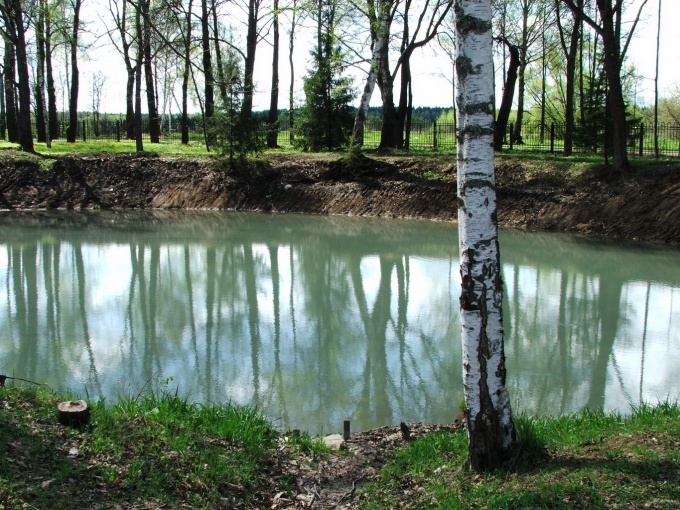Instruction
1
The bottom of the pondand align, holes and low places should not be, their presence leads to waterlogging of the soil.
If the bed of the future pond, as well as its shore there are bushes, trees, stumps or snags, be sure to uninstall all of this with the root, because subsequently they will not interfere with fishing, and will contribute to the growth and sedimentation of the reservoir.
If the bed of the future pond, as well as its shore there are bushes, trees, stumps or snags, be sure to uninstall all of this with the root, because subsequently they will not interfere with fishing, and will contribute to the growth and sedimentation of the reservoir.
2
If possible, clear waters and groundwater, above the dam, in order to increase the flow of water in your pond.
3
Better to make the pond drain, so it will be easier to catch fish and to process bottom of the pond, the pond's bottom with drain is less susceptible to siltation and waterlogging, provide a larger increase of fish. Reservoirs can vary in their devices in different types of breeding different types of fish.
4
Gully pond, you get the hollows, shallow and dry, and also in shallow ravines. Such reservoirs have a small area, the average depth is about 1.5 meters. The water is well warmed by the sun, the bottom of them muddy, they are filled with vegetation. In gully pondAh breed carp, it is for them the best place. Remember that before you start planting material, the bottom of the reservoir needs to be cleaned and all weed fish to catch.
5
The Park and forest ponds often heavily silted, they require the felling of trees and bushes that grow along the shore, the bottom is also clear from the stumps of driftwood. Before you start using the pond, drain it for a year or two and set it the bottom opening. Ponds of this type are suitable for breeding not just carp, but other fish species.
6
Ponds-reservoirs have a large area and depth. If you build a pond of this type, pay attention to clearing the bottom of the reservoir. Ponds-reservoirs are suitable for breeding carp, pike, sterlet, trout, bream, carp etc.
